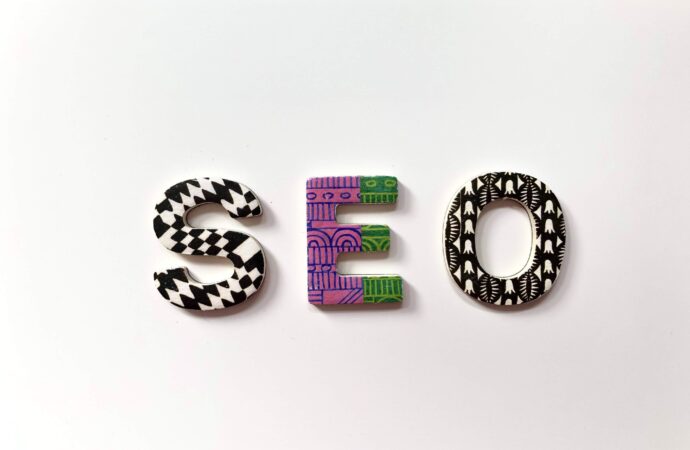When marketers are more likely to get 13X more return on investment and 67% more leads with blogging, businesses must include it in their marketing mix to boost its credibility, drive traffic, and increase sales. Blogging provides potential customers essential information regarding a brand to help them make informed buying decisions. However, what if you
When marketers are more likely to get 13X more return on investment and 67% more leads with blogging, businesses must include it in their marketing mix to boost its credibility, drive traffic, and increase sales.
Blogging provides potential customers essential information regarding a brand to help them make informed buying decisions. However, what if you have a blog, but there’s no traffic? How would you generate links and sales if you are unable to get visitors?
So here are some strategies for increasing the count of your blog visitors, but before that, let’s quickly understand what SEO is and its importance in blogging.
What is SEO? Why Should You Prioritise SEO for Blogging?
Search engine optimisation (SEO) is a set of practices that help in improving the ranking of your blog on the Google search page. It involves keywords that users use to search online and link other sites. Using SEO correctly can:
- Improve your blog ranking
- Increase website traffic
- Bring targeted traffic without heavy investments
- Generate quality leads
- Build brand image and audience trust
- Create brand authority
SEO is a critical strategy for increasing organic traffic for blogs. It allows bloggers to explore ideas and topics that users primarily search for and create blogs on relevant topics to make sure they can reach the target audience and deliver expected results.
8 Proven Ways to Optimise Your Blogs
Whether your blog is on fashion & lifestyle, analytical essay help, or self-help hacks, your posts need to be SEO-friendly so that it appears at the right searches and expands your blog reach. Here’s what you’ve got to do to increase your blog traffic:
- Focus On the Content
You will struggle to improve your search ranking if you post repetitive content. Readers want something new and relevant to connect with. Think about writing compelling blogs to increase returning audiences. Choose a niche and focus on posting informative blogs to become their go-to option for information.
How to find fresh ideas? The most obvious answer is to search online. First, find specific keywords related to your blog and use them to search on the search engines. Concurrently, keep an eye on your competitor’s blogs and check what topics you’ve written on and what you didn’t.
If the topic is trending and already has been written multiple times, make sure you have something unique to offer, like your writing skills, tips, or new information.
- Use the Right Keywords
Keywords are a specific set of words or phrases web users type on search engines to find information. For example, to find the best assessment help in North Carolina, a student might type “best engineering assignment help North Carolina” into search engines and get relevant suggestions from Google.
Similarly, as a blogger, you must use as many relevant keywords as possible to reach a larger audience. Use keyword research tools Semrush, Longtail Pro, or Google’s Keyword Tool to find high-density keywords.
Also, while implementing the keywords, make sure they fit organically into your text. Don’t forcefully include them in your post, as it won’t match with the post’s context.
- Optimise Your Blog Title and Meta Description
Surprisingly, more than 75% of readers don’t click on the link if the title isn’t compelling. That’s why; create engaging titles highlighting the fundamental idea of your blog to pique readers’ interest. Make sure to use the primary keyword in the title and keep it within 66 characters to increase relevance for search spiders.
A meta description is a summary written within 155-165 characters. A well-written meta description with your primary keyword makes it easier for a search engine to find your posts.
- Use Captivating Images
Good pictures make it simpler for your readers to follow your text. It brings your idea to life and helps others to see what you are saying through your text.
In fact, you can increase your blog traffic with high-quality images. How? Well, when users search for images relevant to yours on Google, search crawlers take your pictures to be the most suitable and show them in the search results, creating an opportunity for users to visit your blog for the original image. Furthermore, if they choose to use the image, they will use the picture and link your blog to their website, which is a win-win for both.
However, to ensure that your images appear in the search results:
- Add an alt tag and a relevant keyword to your image
- Save the image under a suitable name and your keyword
- Give Google Original, Scan-friendly Content
Google LOVES authentic, longer-form content. But, unfortunately, many bloggers hesitate to create lengthy articles, thinking users might be less interested in reading them.
According to SEO specialists, posts beyond 1000 words perform better and rank higher on search engines. If you search for top-performing blogs, you’ll find most of them are over 5500 words. So if you write blogs over 2500-3000 words, you are likely to get:
- 5X more quality backlinks
- 4X more blog shares
- 3X more traffic and engagement
Also, most bloggers keep forgetting that large chunks of paragraphs drastically affect the readability factor. As a result, readers are less enthusiastic and read about 28% of the total content.
Hence, to make your blogs more reader-friendly, break down the paragraphs into small paragraphs. Then, use proper headings, subheadings, bullet points, quotes, and categories to make it easier for the crawlers to scan and index your blog. You should also create specific tags or blog categories to organise your blogs and make them easier to find for readers.
- Make Your Blogs Easy to Share
Today, there are over 4.66 billion active web users across the globe. The majority of them are active on multiple social media sites, from Facebook, Instagram, to Twitter.
Facebook has over 2.85 billion monthly active users, while Instagram has roughly 1 billion monthly active users. So linking your blog to these sites will expose you to a massive audience and boost your ranking. Include a call-to-action (CTA) and social media buttons in your blogs so readers can quickly share content and bring more traffic.
- Add Quality Links into Your Blogs
Including links to your blog can increase the chances of you getting noticed. Linking your blog to relevant sites with a higher ranking makes you trustworthy and builds confidence. In addition, Google takes these links as proof that your content is relevant and has high authority.
However, don’t simply add links from random sites just because you found them somewhat relevant. Check how recent the updates are to avoid negative ranking.
- Monitor Reports and Make Changes
Sometimes, blogs fail to deliver results despite the SEO strategies. Yet, you cannot quit on it. SEO strategies take months to generate results, so monitor weekly and monthly results. Study the latest Google algorithms and implement changes, abiding by the upgrades.
Keep a tab on the website traffic, content engagement, demographics, and other metrics. Next, target your audience and research relevant keywords to create more reader-oriented content. Lastly, compare the results of pre-optimisation with post-optimisation to gauge the success rate.
Conclusion
SEO isn’t something that will give results overnight. It takes proper planning, time, and effort. Even though you have to integrate SEO in your blogging efforts, consistency is one factor you cannot ignore. Consistently post good quality content to increase subscriptions and boost SEO performance. Don’t write 3000 word long articles thinking it will help you rank higher. Instead, maintain a balance between quality and quantity to enjoy the SEO benefits of blogging.



















Leave a Comment
Your email address will not be published. Required fields are marked with *